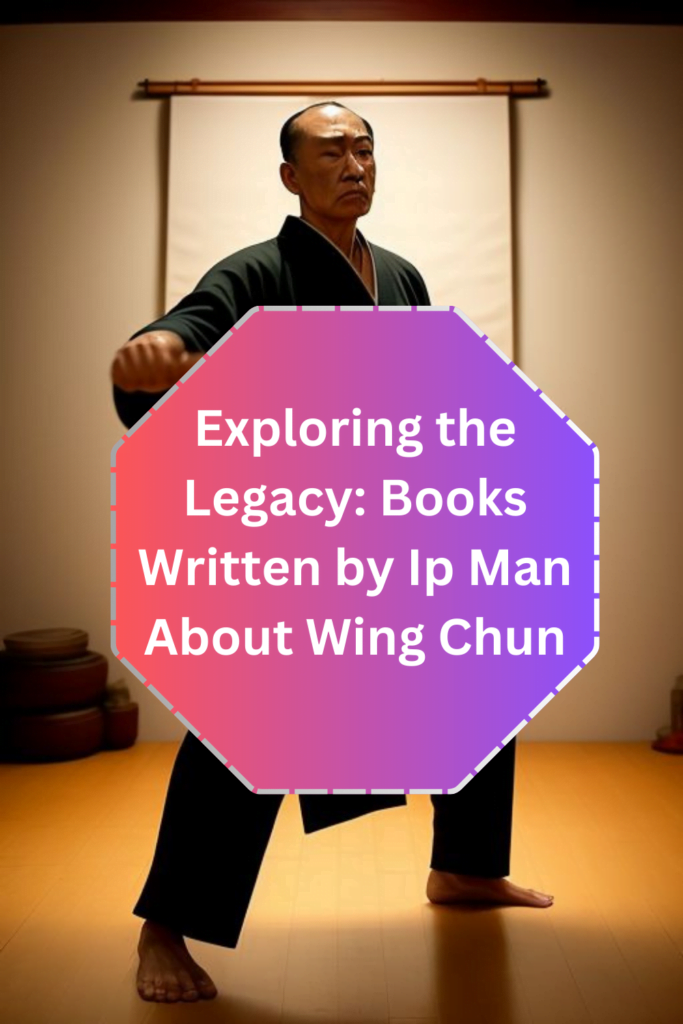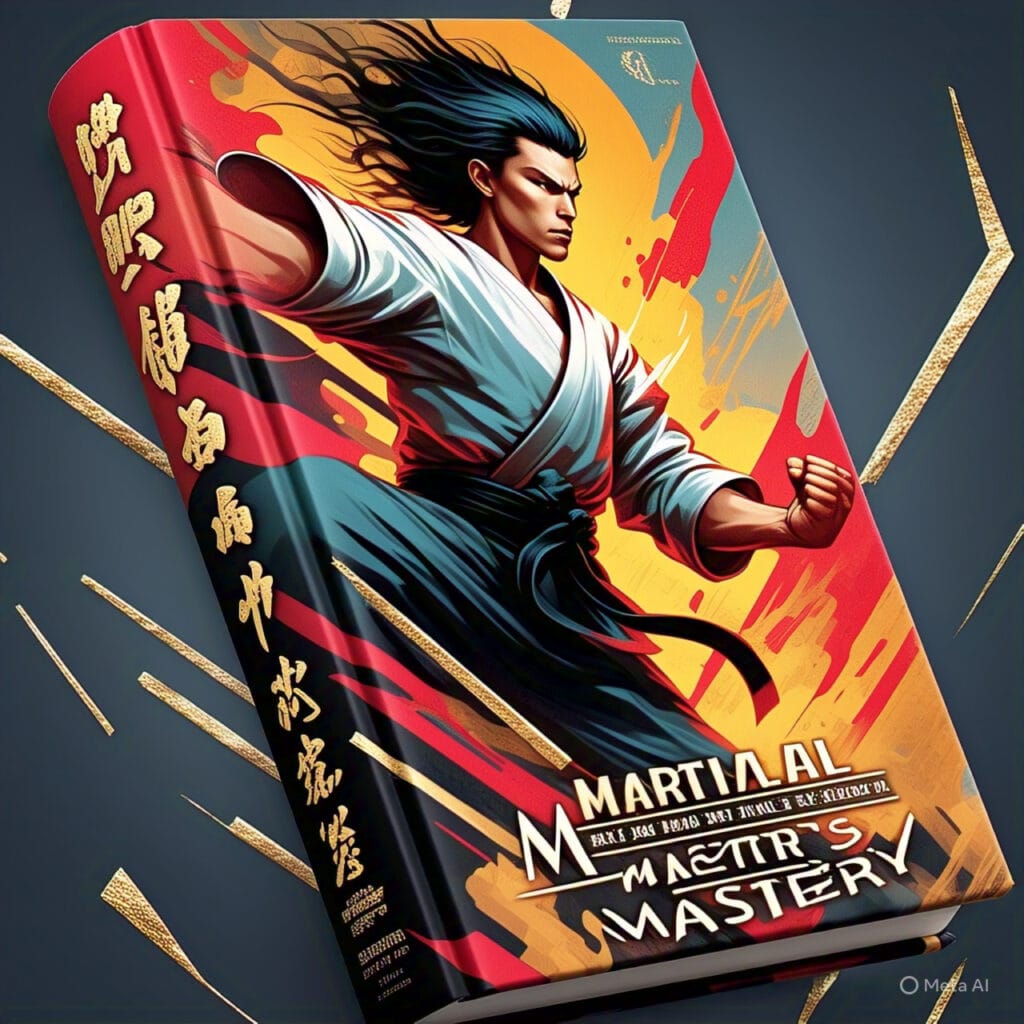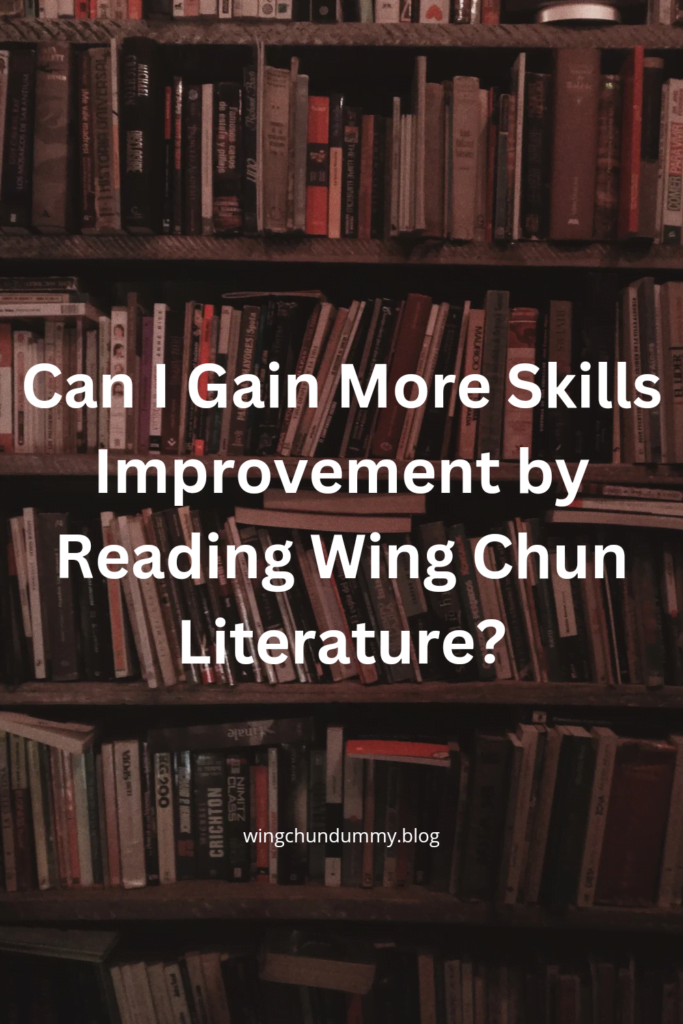Ip Man, a name synonymous with the martial art of Wing Chun, holds a legendary status in the world of martial arts.
Born in Foshan, China, in 1893, Ip Man’s journey into the realm of Wing Chun began at the tender age of 12.
Under the tutelage of Chan Wah-shun, a revered master of Wing Chun, Ip Man’s foundational skills were meticulously crafted.
This early training laid the groundwork for what would become a monumental career in martial arts.
Ip Man’s significance extends far beyond his remarkable skills as a martial artist;
he is credited with the widespread popularization of Wing Chun,
a Southern Chinese martial art known for its close-combat techniques and efficiency.
His teachings emphasized practicality and adaptability, making Wing Chun accessible and appealing to a broader audience.
Ip Man’s impact on Wing Chun is immeasurable, as he transformed it from a relatively obscure martial art into a globally recognized discipline.
During his lifetime, Ip Man trained numerous students, but none more famous than Bruce Lee.
Lee’s association with Ip Man has been a catalyst in cementing Ip Man’s legacy.
Under Ip Man’s guidance, Bruce Lee honed his skills and developed a profound understanding of Wing Chun, which he later integrated into his own martial arts philosophy, Jeet Kune Do.
The teacher-student relationship between Ip Man and Bruce Lee is often celebrated as a pivotal chapter in martial arts history.
Ip Man’s contribution to Wing Chun extends beyond his teachings.
He authored several books detailing the principles and techniques of Wing Chun.
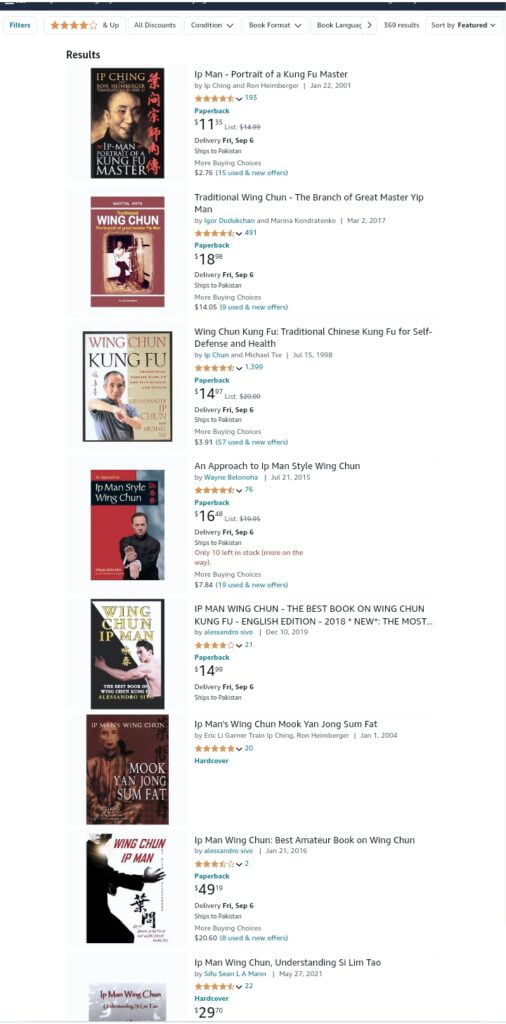
These works serve as valuable resources for practitioners and enthusiasts, preserving the essence of Wing Chun for future generations.
Through his books, Ip Man continues to inspire and educate, ensuring that the art of Wing Chun thrives.
In essence, Ip Man’s legacy in the martial arts world is unparalleled.
His dedication to Wing Chun, his role as a teacher, and his written works have collectively immortalized him as a pivotal figure in the history of martial arts.
His influence endures, inspiring countless individuals to explore and appreciate the rich tradition of Wing Chun.
The Philosophy and Principles of Wing Chun
Wing Chun, a traditional Chinese martial art, is renowned for its emphasis on practicality, efficiency, and directness.
As taught by the legendary Ip Man, the philosophy of Wing Chun revolves around several core principles that distinguish it from other forms of martial arts.
One of the most fundamental concepts is the centerline theory.
This principle posits that the most effective way to both attack and defend is by controlling the central line of the body, which is considered the most vulnerable part.
By focusing on this imaginary line running down the center of the body, practitioners can maximize their defensive and offensive capabilities.
Another key principle in Wing Chun is the simultaneous attack and defense.
Unlike other martial arts that separate offensive and defensive maneuvers, Wing Chun integrates them into single, fluid movements.
This approach not only conserves energy but also reduces the time it takes to respond to an opponent’s actions.
The idea is to neutralize an attack while launching a counterattack in the same motion, thereby creating a seamless flow of movements that keeps the practitioner one step ahead.
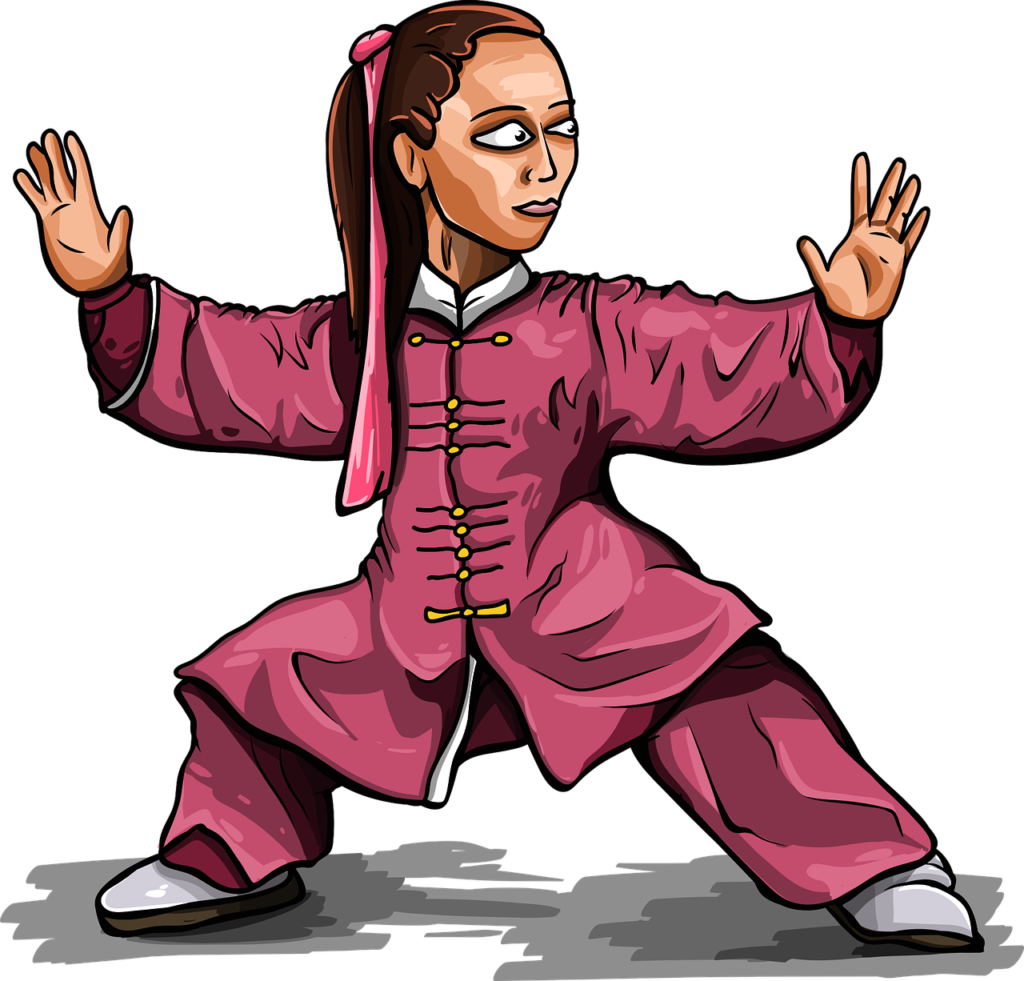
Ip Man also emphasized the importance of relaxation and efficiency in movement.
In Wing Chun, brute strength is less important than the ability to remain relaxed and to move economically.
Tension and unnecessary force can slow down a practitioner and make their movements more predictable.
Instead, Wing Chun teaches practitioners to use only the amount of force necessary to achieve their objective, making their actions more efficient and less tiring.
Understanding these core principles is crucial for anyone interested in Wing Chun, as they form the foundation upon which all techniques are built.
These philosophies not only guide the physical practice of Wing Chun but also inform the mental and strategic aspects of the martial art.
With this foundational knowledge, one can better appreciate the depth and wisdom encapsulated in the books written by Ip Man, which delve further into these timeless principles.
Overview of Ip Man’s Written Works
Ip Man, a legendary figure in martial arts, has left an indelible mark on the world of Wing Chun through his various written works.
These texts provide invaluable insight into the philosophy, techniques, and training methods of this traditional Chinese martial art.
Though Ip Man was primarily known for his practical teachings and demonstrations, his written contributions have also played a crucial role in preserving and disseminating Wing Chun knowledge.
One of the most notable works attributed to Ip Man is the “Wing Chun Kuen Kuit.”
This manuscript, which translates to “Wing Chun Fighting Songs,” is a collection of poetic verses that encapsulate the core principles, strategies, and concepts of Wing Chun.
The exact date of its creation is not well-documented, but it remains a vital resource for practitioners seeking a deeper understanding of the art.
Another significant text is “Wing Chun Rattan Ring Training.”
This book delves into the specific training methods involving the rattan ring, a traditional tool used to enhance the practitioner’s hand techniques and coordination.

Published posthumously, this work highlights Ip Man’s emphasis on the importance of traditional training apparatus in developing martial skills.
Ip Man’s “Wing Chun Wooden Dummy Techniques” is also an essential reference for students of Wing Chun.
This book, which details the sequences and applications of the wooden dummy form, was published after his death by his disciples.
It reflects Ip Man’s meticulous approach to training and his commitment to preserving the intricacies of the art.
Additionally, “The Fundamentals of Wing Chun” is a comprehensive guide that covers the basic stances, hand techniques, and forms.
This book, often considered a foundational text, was created to provide beginners with a solid grounding in Wing Chun principles and practices.
Across these works, common themes such as the importance of structure, efficiency of movement, and the integration of mind and body are consistently emphasized.
Ip Man’s written legacy continues to serve as a cornerstone for Wing Chun practitioners, offering a timeless roadmap for mastering this revered martial art.
Book Analysis: ‘Wing Chun Kuen Kuit’
‘Wing Chun Kuen Kuit’ is among the most celebrated works attributed to Ip Man, offering profound insights into the art of Wing Chun.
This text stands out not merely as a technical manual but as a philosophical guide that delves deep into the underlying principles of Wing Chun.
The structure of the book is both systematic and methodical.
Designed to cater to practitioners at various levels of expertise.
The core of ‘Wing Chun Kuen Kuit’ revolves around the ‘kuits’ or maxims.
Which serve as succinct expressions of Wing Chun’s philosophy and techniques.
These maxims are not just instructional aphorisms but are meant to stimulate deep contemplation and understanding.
Each ‘kuit’ encapsulates essential principles that guide the practitioner in the physical and mental aspects of training.
One of the key teachings found in the book is the emphasis on efficiency and economy of movement.
This principle is recurrent throughout the ‘kuits,’ highlighting the importance of using minimal effort to achieve maximum effect.
The concept of “simplicity” is deeply ingrained in Wing Chun.
And Ip Man articulates this through various maxims that encourage direct and straightforward techniques.
Another significant aspect of ‘Wing Chun Kuen Kuit’ is the focus on the central line theory.
This theory posits that control of the central line is crucial for both offense and defense.
The maxims related to this principle guide practitioners in maintaining their center while disrupting their opponent’s balance and structure.

Ip Man’s elucidation of this theory provides a strategic framework that is fundamental to mastering Wing Chun.
Moreover, the book delves into the mental and emotional discipline required in Wing Chun practice.
Through the ‘kuits,’ Ip Man conveys the importance of maintaining calm and composure, irrespective of the external circumstances.
This psychological aspect is crucial for effective self-defense and personal development.
‘Wing Chun Kuen Kuit’ is an indispensable resource for anyone serious about understanding the deeper layers of Wing Chun.

It offers a blend of practical guidance and philosophical reflections that are essential for both novice and seasoned practitioners.
By internalizing the teachings of the ‘kuits,’ one can achieve a more profound and holistic mastery of Wing Chun.
Book Analysis: ‘Wing Chun Compendium’
The ‘Wing Chun Compendium’ stands as a cornerstone in the literary contributions of Ip Man, extensively detailing the art of Wing Chun.
Divided into several chapters, the compendium systematically covers a wide array of topics, providing a thorough understanding of this martial art form.

Each chapter delves into specific aspects of Wing Chun, making it an invaluable resource for both novice and seasoned practitioners.
The initial chapters of the ‘Wing Chun Compendium’ introduce the reader to the historical context of Wing Chun.
Offering insights into its origins and evolution.
These sections are crucial for understanding the foundational principles that underpin the martial art.
Ip Man meticulously explains the philosophical underpinnings of Wing Chun.
Emphasizing the importance of balance, efficiency, and the seamless integration of mind and body.
Subsequent chapters are dedicated to the technical aspects of Wing Chun.
Ip Man provides detailed descriptions of various forms, such as Siu Nim Tau, Chum Kiu, and Biu Gee.
Each form into individual movements, add explanations to their practical applications in combat scenarios.
This level of detail ensures that practitioners can grasp the nuances of each technique.
Facilitating effective training and mastery.
Training methods are another focal point of the compendium.
Ip Man outlines various drills and exercises designed to enhance reflexes, strength, and coordination.
He also emphasizes the significance of Chi Sao (Sticky Hands) practice.
A unique training method that hones a practitioner’s sensitivity and responsiveness.
Beyond physical techniques, the ‘Wing Chun Compendium’.
Also addresses the mental and strategic elements of the martial art.
Ip Man discusses the importance of maintaining a calm and focused mind, even in the heat of combat.
He explores tactical concepts such as positioning, timing.
And the efficient use of energy, all of which are integral to mastering Wing Chun.
In essence, the ‘Wing Chun Compendium’ serves as a holistic guide for practitioners, encapsulating the depth and breadth of Ip Man’s knowledge.
Its detailed breakdown of forms, training methods, and strategic principles makes it an indispensable resource for anyone seeking to understand and excel in Wing Chun.
The Influence of Ip Man’s Writings on Modern Wing Chun
Ip Man’s contributions to Wing Chun through his books have had a profound impact on the modern practice and instruction of this martial art.
His detailed writings have not only preserved the traditional techniques but have also introduced them to a broader audience, ensuring that the art form evolves while staying true to its roots.
In contemporary Wing Chun curricula, Ip Man’s texts serve as foundational material.
Schools and training programs across the globe incorporate his teachings, often using his books as primary references.
This has led to a standardized approach to Wing Chun, which helps maintain consistency in instruction.
For instance, many instructors emphasize the core principles laid out by Ip Man, such as the importance of centerline theory and economy of movement, which are critical aspects of Wing Chun practice.
Making the knowledge accessible to enthusiasts worldwide.

This accessibility has fostered a diverse and widespread community of practitioners who share a common understanding of Wing Chun principles.
Testimonials from current practitioners often highlight the clarity and depth of Ip Man’s explanations.
He has enabled them to refine their techniques and deepen their understanding of the art.
Moreover, teachers frequently cite Ip Man’s influence in their instructional methods.
Similarly, many students express their appreciation for the structured guidance provided by these texts.
Which helps them progress systematically in their training.
Overall, Ip Man’s writings have not only preserved the essence of Wing Chun but have also played a crucial role in shaping its modern practice.
By bridging the traditional with the contemporary.
His books continue to inspire and educate new generations of martial artists.
Comparative Analysis: Ip Man’s Books vs. Other Wing Chun Literature
Ip Man, a legendary figure in the world of martial arts.
Has made significant contributions through his writings on Wing Chun.
His works are often compare with other notable literature in this field.
A detailed comparative analysis reveals both convergences and divergences in teaching methods, philosophies, and technical descriptions.
Providing a clearer picture of Ip Man’s unique contributions.
One of the prominent similarities lies in the foundational principles of Wing Chun.
Like other Wing Chun literature, Ip Man emphasizes the importance of the centerline theory.
ECONOMY of movement, and simultaneous attack and defense.
These core principles serve as the bedrock of Wing Chun practice, resonating across various texts.
However, Ip Man’s straightforward and unembellished writing style sets his books apart.
Making complex concepts accessible to practitioners at all levels.

In terms of teaching methods, Ip Man’s books often adopt a more personalized approach compared to other authors.
While many Wing Chun texts take a systematic and structured route, outlining techniques and forms in a sequential manner.
Ip Man’s writings frequently include anecdotal insights and practical advice drawn from his own experiences.
This approach not only humanizes the learning process but also offers readers a glimpse into the real-world applications of Wing Chun.
Philosophically, Ip Man’s works stand out for their emphasis on adaptability and pragmatism.
Unlike some other Wing Chun literature which may delve deeply into the theoretical and historical aspects.
Ip Man focuses on the practical effectiveness of techniques.
A perspective that has influenced modern interpretations of the martial art.
Technical descriptions in Ip Man’s books are often more concise and to the point.
In contrast to the elaborate explanations found in other texts.
This brevity, while challenging for some readers, encourages a hands-on approach to learning.
To engage directly with the techniques, fostering a deeper, more intuitive understanding.
In conclusion, while there are clear parallels between Ip Man’s books and other Wing Chun literature.
His unique teaching methods, pragmatic philosophy.
And concise technical descriptions distinguish his work.
These elements collectively contribute to the enduring legacy of Ip Man’s writings in the world of martial arts.
Conclusion: The Enduring Legacy of Ip Man Through His Writings
Ip Man’s contributions to the world of Wing Chun extend far beyond his physical prowess and legendary status as a martial artist.
His writings offer invaluable insights into the philosophy, techniques.
And principles that form the foundation of this esteemed martial art.
By documenting his knowledge, Ip Man create a timeless resource that continues to educate and inspire practitioners globally.
Throughout the blog, we explore various aspects of Ip Man’s literary works, delving into the unique perspectives and teachings encapsulated in each book.
These writings not only preserve the integrity of Wing Chun but also serve as a bridge connecting the past with the present.
They provide a comprehensive understanding of the martial art.
Enabling enthusiasts to delve deeper into its intricacies and refine their practice.
The significance of Ip Man’s contributions are limit less.
His books are more than mere instructional manuals.
They are a testament to his dedication to preserving and advancing Wing Chun.
Through his meticulous documentation.
The art form would endure, evolving while remaining true to its core principles.
This enduring legacy has attract countless practitioners who seek to master Wing Chun and embody its values.
In today’s context, Ip Man’s teachings continue to resonate with martial artists of all levels.
The principles are not confined to combat but extend to personal development, discipline, and a deeper understanding of oneself.
His writings encourage practitioners to approach their training with mindfulness, respect.
And a commitment to continuous improvement.
As we reflect on the lasting impact of Ip Man’s literary contributions.
It becomes evident that his influence extends far beyond his lifetime.
His books remain a cornerstone of Wing Chun practice.
guiding and inspiring new generations of martial artists.
The legacy of Ip Man, preserved through his writings.
ensures that Wing Chun will continue to thrive, evolve, and inspire for years to come.

